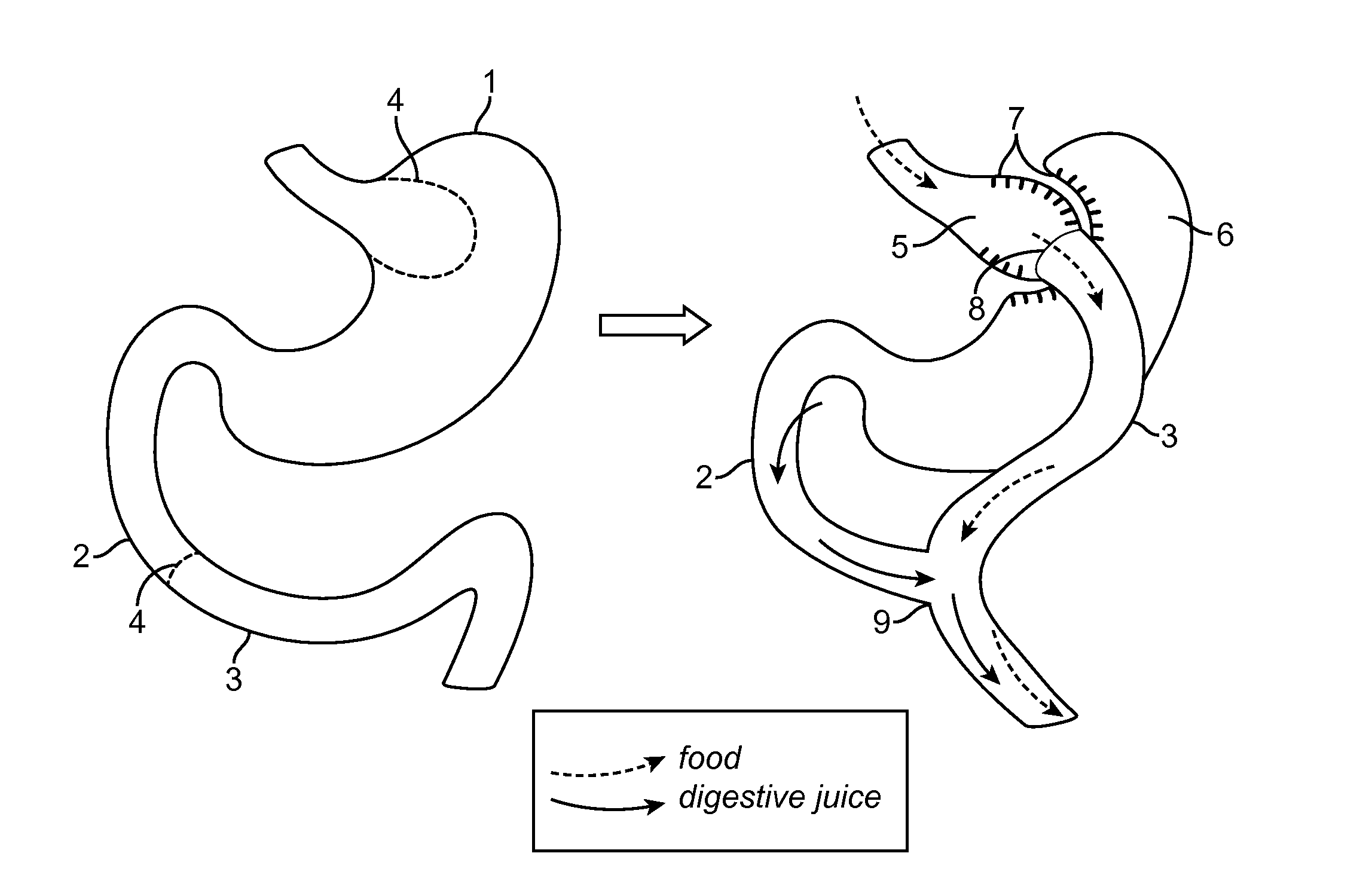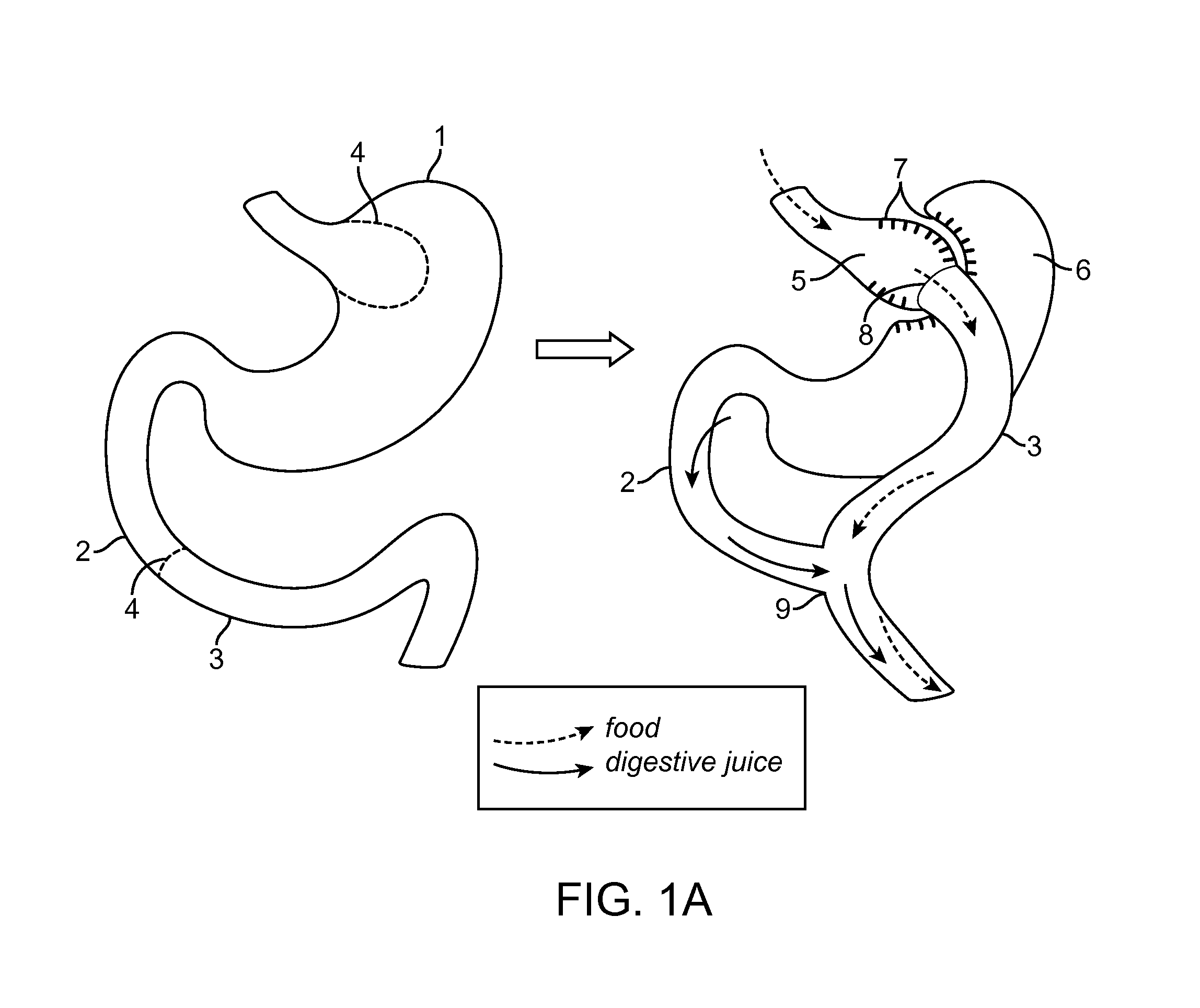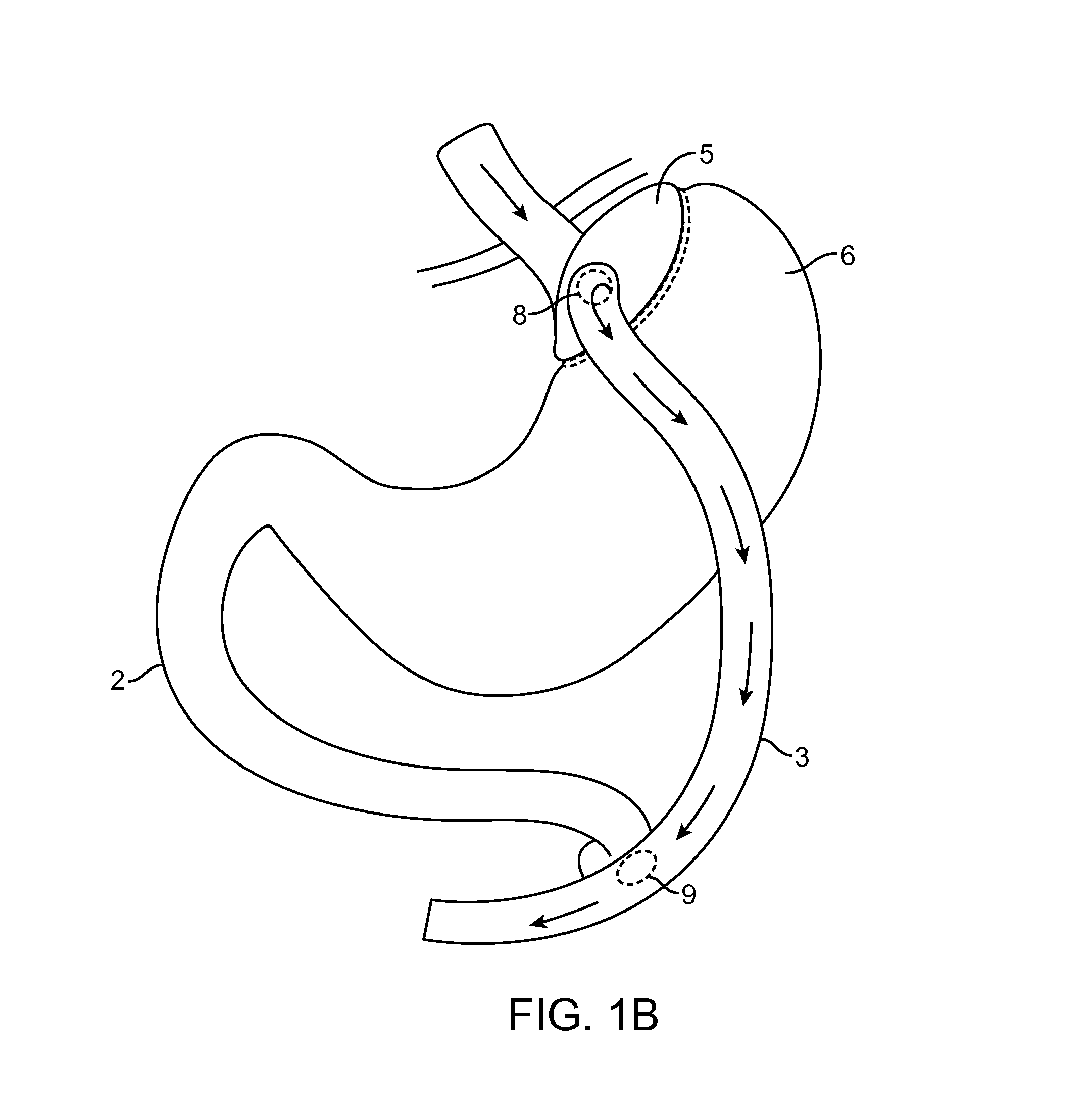Devices and methods for forming an anastomosis
a technology of anastomosis and device, applied in the field of medical methods and equipment, can solve the problems of presenting a substantial risk to the patient, affecting the patient's recovery, so as to achieve the effect of reducing the risk of recurren
- Summary
- Abstract
- Description
- Claims
- Application Information
AI Technical Summary
Benefits of technology
Problems solved by technology
Method used
Image
Examples
Embodiment Construction
[0103]Methods and devices are disclosed herein for forming an anastomosis. The devices and methods disclosed herein can be used to form multiple anastomoses. Tissue anchors and stents can be used to form the anastomosis. The anastomosis can be made using an endoscope, catheter, laparoscopic surgical instrument, laparoscopic, general surgery device, or a combination of one or more of these devices. The stents disclosed herein can be delivered using catheter based systems. In some embodiments the stents disclosed herein can be delivered using a laparoscopic device. In some embodiments the stents disclosed herein can be delivered using a rigid catheterless system. In some embodiments the stents can be delivered using a combination of a catheter and laparoscopic tools, for example the stent can be deployed with the catheter device and navigation and visualization assistance can be provided by the laparoscopic tools.
[0104]Improved access tools, improved stent designs to form consistent l...
PUM
 Login to View More
Login to View More Abstract
Description
Claims
Application Information
 Login to View More
Login to View More - R&D
- Intellectual Property
- Life Sciences
- Materials
- Tech Scout
- Unparalleled Data Quality
- Higher Quality Content
- 60% Fewer Hallucinations
Browse by: Latest US Patents, China's latest patents, Technical Efficacy Thesaurus, Application Domain, Technology Topic, Popular Technical Reports.
© 2025 PatSnap. All rights reserved.Legal|Privacy policy|Modern Slavery Act Transparency Statement|Sitemap|About US| Contact US: help@patsnap.com



